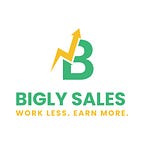Unlocking the Power of Call Tracking Metrics: Boost Your Call Center’s Efficiency
Today, understanding every aspect of your customer interactions can make a significant difference in how your business performs. One of the most powerful tools at your disposal is call tracking metrics.
These metrics not only shine a light on how your call center operates but also reveal opportunities to enhance customer satisfaction and optimize your sales and marketing strategies.
So, what exactly are call tracking metrics, and why are they so crucial for your business? Let’s dive in!
Understanding Call Tracking Metrics
Call tracking is more than just counting how many calls your business receives; it’s about analyzing the quality and outcome of those calls.
By employing call tracking, you can gather data on various aspects of your calls, such as the number of calls, the duration of each call, who answers them, and much more.
This data is then transformed into actionable insights that can help you streamline operations and boost customer engagement.
The Must-Track Metrics for Call Center Success
To truly leverage the power of call tracking, you need to focus on several key metrics. Here are the ones you can’t afford to overlook:
1. Call Volumes: Understanding how many calls you receive can help you manage staffing and gauge marketing campaign effectiveness. A sudden spike in calls might indicate a successful campaign or a pressing issue customers are facing.
2. Average Call Duration: This metric tells you how long your agents spend on the phone with customers. Short calls might suggest quick resolutions or insufficient support, while longer calls could indicate more complex issues or high levels of customer engagement.
3. Caller Sentiment: Are your customers happy when they hang up? Analyzing the sentiment of your calls can provide deep insights into customer satisfaction and agent performance.
4. First-Call Resolution Rate: This is a critical metric for assessing efficiency. High first-call resolution rates mean that your customers are getting their issues resolved quickly and effectively, enhancing overall satisfaction.
5. Conversion Rate for Sales Calls: If you’re running a sales-driven call center, knowing your conversion rate is key. This metric helps you understand how many callers are turned into customers, which in turn helps refine your sales tactics.
6. Call Abandonment Rate: A high abandonment rate can be a red flag, indicating that your call center might be understaffed or that your agents are not responding quickly enough.
7. Customer Satisfaction Scores (CSAT): Direct feedback from customers about their call experience can help you measure how well your team is doing in terms of service quality.
8. IVR Menu Metrics: If you use an Interactive Voice Response system, tracking how callers interact with it can help you ensure it’s as efficient and helpful as possible.
Leveraging Technology to Track These Metrics
Modern call tracking solutions offer robust analytics features that make tracking these metrics straightforward.
Conclusion
Implementing effective call tracking can lead to dramatic improvements in your call center’s operational efficiency and customer satisfaction.
By understanding and acting on these metrics, you can make informed decisions that directly affect your bottom line and customer retention rates.
